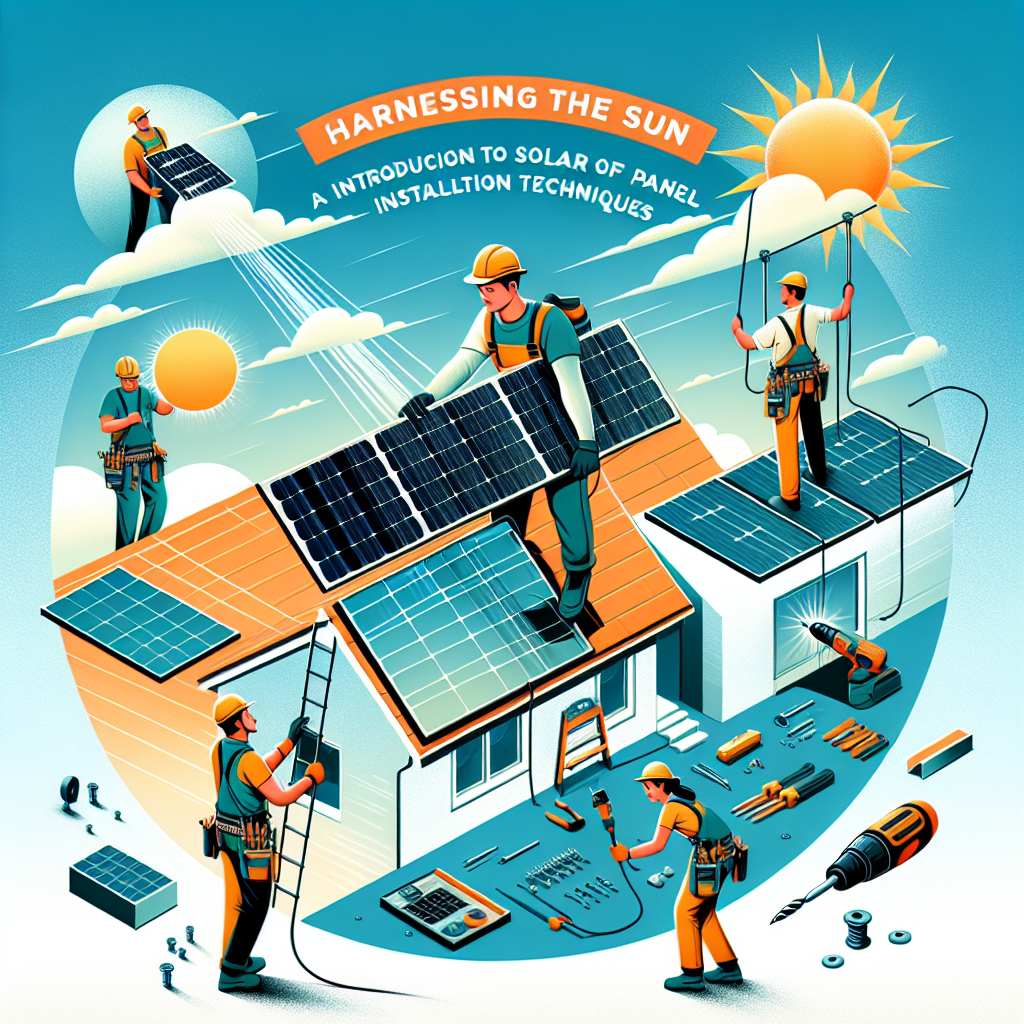As our world grapples with climate change and the need for sustainable energy solutions, solar power has emerged as one of the most promising avenues for clean energy. Installing solar panels not only reduces reliance on fossil fuels but also paves the way for significant savings on energy bills. In this article, we will explore various solar panel installation techniques that make harnessing the sun easier and more efficient.
Understanding Solar Panel Basics
Before diving into installation techniques, let’s review what solar panels are and how they work. Solar panels convert sunlight into electricity through photovoltaic cells. These cells generate direct current (DC) electricity, which is then converted to alternating current (AC) for use in homes and businesses. Understanding this fundamental process is crucial for successful installation.
Choosing the Right Type of Solar Panels
Monocrystalline vs. Polycrystalline
When it comes to solar panels, homeowners typically choose between two main types: monocrystalline and polycrystalline panels. Monocrystalline panels are known for their high efficiency and sleek design. They tend to perform better in low-light conditions but come at a higher cost. In contrast, polycrystalline panels are more affordable and slightly less efficient but can still provide substantial energy output.
Thin-Film Solar Panels
An emerging alternative is thin-film solar panels. These panels are lightweight and flexible, which allows for a variety of installation applications. They generally have lower efficiency rates but can be an excellent choice for specific situations, such as shading or curved surfaces.
Preparing for Installation
Assessing Your Energy Needs
Before any installation begins, it’s crucial to assess how much energy you consume. Reviewing utility bills and performing a comprehensive energy audit can help you understand your consumption patterns. This step ensures that you install enough solar panels to meet your household’s energy demands.
Choosing the Proper Location
The efficiency of solar panels greatly depends on their placement. Ideally, solar panels should be installed in spots that receive maximum sunlight throughout the day, typically on south-facing rooftops. Avoid areas with high shading from trees, buildings, or chimneys. If roof installation isn’t feasible, ground-mounted panels are an excellent alternative.
Installation Techniques
Roof Installation
Fixed Rack Systems
The most common installation method for residential solar panels is the fixed rack system. This style involves mounting panels on an angled frame that optimally captures sunlight. The angle may vary based on geographical location, but a tilt of 30 to 45 degrees often yields the best results.
Ballasted Systems
For flat roofs, ballasted systems offer a unique solution. This method uses weights to hold the panels in place without penetrating the roof, minimizing the risk of leaks. Ballasted systems cater to diverse flat surface configurations and provide easy installation and removal.
Ground-mounted Systems
If roof space is limited, or the roof condition isn’t suitable for solar panel installation, ground-mounted systems come to the rescue. These can be fixed or adjustable, allowing you to adapt them to seasonal changes. Ground-mounted models often provide greater accessibility for maintenance, thus extending the lifespan of your solar panels.
Solar Carports
For creative thinkers, consider a solar carport. These structures serve a dual purpose by providing parking space while generating solar power at the same time. Solar carports can significantly enhance the aesthetics of your property and can be a smart investment for both homes and businesses.
Connecting to the Grid
Once your solar panels are installed, the next step is to connect your system to the electric grid. This process typically involves a dedicated inverter that converts the DC electricity generated by the panels into AC electricity for use in your home. A licensed electrician can assist in ensuring your system meets all local codes and regulations.
Maintenance and Monitoring
Regular Inspections
The good news is that solar panels require minimal maintenance. However, it’s advisable to perform regular inspections to ensure maximum efficiency. Look for any debris, dust, or shading that could obstruct sunlight. Periodic cleaning, especially in dust-prone areas, can greatly improve performance.
Monitoring Systems
Most modern solar installations come with monitoring systems that allow homeowners to track their energy production in real time. Familiarizing yourself with these tools can help you stay informed about your energy usage, allowing you to make adjustments as needed.
Conclusion: A Bright Future Awaits
Harnessing the sun’s energy through solar panel installation is not only a sustainable choice for the environment but also a beneficial investment for your future. By understanding the installation techniques and options available to you, you can successfully transition to solar energy and contribute to a greener planet. Whether you are a DIY enthusiast or prefer to hire professionals, the journey towards renewable energy is rewarding, empowering, and ripe with potential. The sun is shining, and it’s time to make the most of it!


